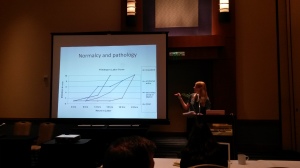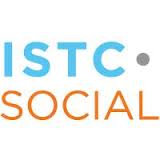Special Issue of Health Informatics Journal: Data Work in Healthcare
I am pleased to announce that a special issue of Health Informatics Journal (HIJ) that I co-edited with Claus Bossen, Gunnar Ellingsen, Federico Cabitza, and Enrico Piras is now out. The special issue features papers on teeth whitening, with data work in healthcare and features a wide variety of empirical cases of data work performed by patients, clinicians, coders, and many others in the healthcare ecosystem. Click here for the table of contents.
ASU-Mayo Seed Grant
I am very pleased to announce that a group of wonderful colleagues at ASU and Mayo Clinic and myself have received a seed grant in the amount of $50,000 to conduct a research project entitled “Patient-Centered Exploration and Innovation to Understand and Ease the Burden of Dialysis.” The project will provide initial mixed-methods (survey, interview, and ethnographic observations) of the burden of work that dialysis patients with severe kidney disease face in managing their healthcare and the specific practices through which these patients manage the work of being a dialysis patient. We will use this initial research to develop a larger project in the future, so stay tuned. The research team includes Kasey Boehmer, Victor Montori, and Bjoerg Thorsteindottir from the Mayo Clinic Knowledge and Evaluation Research Unit; Samantha Whitman from the ASU College of Health Solutions; Erik Johnston from the ASU School for the Future of Innovation in Society; and myself.
Lee Dirks Award
I am honored to announce that my co-authors Chistine Wolf, Melissa Mazmanian, and I received the Lee Dirks Award for Best Paper at iConference 2016. The paper is entitled The Work of Reuse: Birth Certificate Data and Healthcare Accountability Measurements; link to full text on “research” page.
New position and research project on the Salton Sea
I am pleased to announce that I began a new position (in addition to my current appointment as a project scientist in Informatics) as Academic Coordinator for the UC Irvine Salton Sea Initiative. The Salton Sea is a large inland saline lake in Southern California fed through agricultural runoff. It is losing volume and gaining in salinity, leading to complex health and habitat problems for the human and wildlife populations that surround it. Management of the problems has remained at a standstill for decades.
Part of my work with the initiative will entail connecting researchers doing work from all disciplinary backgrounds on the sea, its ecosystem, management, and impacts. I am also spearheading a collaborative project to do some true “infrastructuring”– creating information infrastructure that will support research, monitoring, and community knowledge production about the incredibly complex issues facing the sea and its management going forward. I am partnering with the CSU San Bernardino Water Resources Institute on this project and working closely with faculty and researchers at UC Irvine, as well as multiple governmental and community stakeholder organizations.
Honorable Mention at CHI
I am pleased to announce that my paper with Max Liboiron– The Politics of Measurement and Action— received an honorable mention for best paper at the ACM Conference on Human Factors in Computing Systems, the top conference for Human-Computer Interaction. Honorable mention is a designation for the top 5% of papers at the conference, which is already very selective, accepting only about 20% of papers submitted in any given year. I presented the paper on behalf of myself and Max in Seoul.
forthcoming paper in CHI 2015
Max Liboiron and I received the good news that our CHI paper, entitled The Politics of Measurement and Action, has been accepted for CHI 2015. I will be presenting the paper in Seoul in April.
Abstract: Contemporary populations, public services, security, and the environment are often made through knowledge gleaned from ‘big data’ and its attendant infrastructures and algorithms. Though often described as ‘raw,’ this data is produced by techniques of measurement. As examined by previous research, these practices of measurement are never “raw.” They are imbued with judgments and values that dictate what is counted and what is not, what is considered the best unit of measurement, and how different things are grouped together and “made” into a measureable entity. In this paper, we analyze these politics of measurement through two case studies involving high stake public health measurements. We find that the judgments and values that inhere in seemingly mundane, disinterested measurement – and thus in data–-are also recognized by medical practitioners who intentionally leverage measurement to change definitions of harm and health. Our work thus widens the conversation about the politics of measurement to include emancipatory aims alongside cautionary ethics more common in existing literature.
AIGA Presentation: Co-Creating Methods and Practices: Understanding Collaborations between Ethnographers and Designers

I’m a bit late in posting this, but in September Collaborator Arden Stern and I presented our work on practices of collaboration between ethnographers and designers at the AIGA New Ventures conference in Portland, Oregon. Many thanks to session organizer Elpitha Tsoutsounakis.
Abstract: A great deal has been written on the convergence of ethnographic and designerly modalities, yet much work to date has focused on the development and engagement of ethnographic methods for designers and design researchers. The ways in which ethnographers and designers work collaboratively in groups has attracted considerably less attention. This paper reviews and analyzes the methods that ethnographers and designers use to collaborate in the context of social impact design, a field that often necessitates the creation of interdisciplinary teams to solve complex problems, within the context of design education. Offering an overview of different existing models as well as possible models for this form of interdisciplinary collaboration, we situate our analysis of these approaches within a series of case studies drawn from academic settings. We focus in particular on two: 1) a case study of ethnographers and designers collaborating within an undergraduate social impact design program, and 2) a case study of designers, engineers, and ethnographers collaborating to produce insights in a strategic partnership between Intel Labs and an academic research center. Each of these cases is described and analyzed using frameworks and principles from Science of Team Science (SciTS), which studies the contexts, conditions, and behaviors that impact formation and success of transdisciplinary teams, alongside discussions and theories of knowledge sharing and collaboration drawn from the Social Sciences, Humanities, and interdisciplinary studies of knowledge infrastructure. We argue that careful consideration of how the strategies and traditions mobilized by designers and ethnographers both dovetail and diverge can lead not only to more effective team-building but also more dynamic and sustainable approaches to social impact initiatives. Our goal is to use these frameworks and dialogues to help both designers and ethnographers reflect critically on their collaborations and engage more effective interdisciplinary methods.
iConference paper: Emerging Insights on Building Infrastructure for Data-Driven Transparency and Accountability of Organizations
![]()
Excited to say that my paper “Emerging Insights on Building Infrastructure for Data-Driven Transparency and Accountability of Organizations” was accepted to the iConference. Melissa Mazmanian is a co-author.
Abstract: Increasingly, diverse domains including education, law enforcement, healthcare, and business are attempting to harness the power of IT tools and increased computing and storage capacity for data to increase visibility of work practices for management and quality improvement. Simultaneously, organizations in multiple domains face increasing demands for externally facing transparency. A vast array of large-scale information systems is currently being leveraged and developed to undergird data creation, analysis, reporting, dissemination, and sanction. In this early work, we present preliminary data and insights from a multi-sited ethnography of the development of infrastructure for data-driven organizational transparency and accountability in the healthcare domain. The aim is to unearth and describe key aspects of information infrastructures and considerations for organizational stakeholders involved in developing data tools and systems for purposes of transparency, quality improvement, and accountability. Some initial considerations include dual functions of the data, communication hierarchy, emergent seams, and bridging installed bases and communities of practice.
Quantified Society: Data Beyond the Individual Panel
At the May meeting for  the Intel Science and Technology for Social Computing I had the pleasure of chairing a panel on Quantified Society: Data Beyond the Individual. The panel included research on the social and political life of algorithms, algorithmic dimensions of organizations and organizing, and performativity of data metrics and featured excellent talks by Tarleton Gillespie (Cornell University), Pernille Bjorn (IT University Copenhagen), and Malte Ziewitz (New York University). The meeting was held at Georgia Tech University in Atlanta, Georgia.
the Intel Science and Technology for Social Computing I had the pleasure of chairing a panel on Quantified Society: Data Beyond the Individual. The panel included research on the social and political life of algorithms, algorithmic dimensions of organizations and organizing, and performativity of data metrics and featured excellent talks by Tarleton Gillespie (Cornell University), Pernille Bjorn (IT University Copenhagen), and Malte Ziewitz (New York University). The meeting was held at Georgia Tech University in Atlanta, Georgia.
Here is a picture of me giving a talk on the performativity of measurements used in the practice of obstetrics, using the illustrative case of Friedman’s curve (a classic tool used to assess the progress of labor and diagnose abnormal labor patterns).
COOP Paper “When medical expertise meets record expertise: the practices of patients’ accessible medical records in China”
My paper with Yunan Chen was accepted to the 11th International Conference on the Design of Cooperative Systems.
Abstract: Recent consumer, private sector, and governmental health informatics initiatives outline patient accessible medical records (PAMR) as key for engaging patients and supporting patient-clinician communication. However, many challenges have been encountered in designing usable digital systems for patients to access and use their medical records. Barriers to such systems include social, cultural, and policy constraints in addition to usability problems. In particular, questions of expertise, responsibility, and ownership surrounding medical records are often hotly contested between medical professionals and healthcare organizations. In broaching the design challenge of PAMR, much can be learned from examining existing practices for patient carried and accessible records in contexts where these practices are well established. We examine practices surrounding PAMR in a setting where medical records have long been managed by patients: the Chinese healthcare system. Through close examination of managing medical records and sharing medical health information, we find that these personal record practices in China enable a two-way medical records sharing practice between patients and their providers, which fundamentally reconfigures the patient role in healthcare process, facilitates development of ‘record expertise’ on the part of patients, and joint responsibility for health management. We use these findings to illuminate the potential benefits of PAMR, and to offer design considerations to optimize future systems design and deployment efforts in other contexts.



